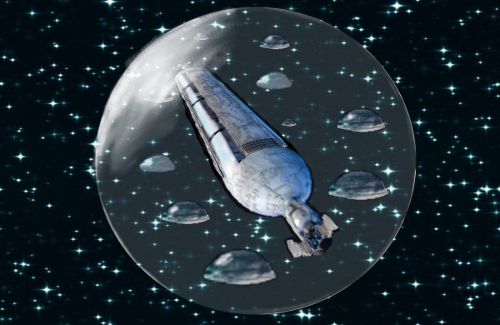OCTOPUSES AREN'T ALIEN AFTER ALL?
/Image from the H.P. Lovecraft Wiki
A number of science-related stories caught my eye this week: a competition to design Elon Musk’s Hyperloop, claims that octopus DNA is alien, and a planned clinical trial to revive people who are brain dead. How to choose? So read on about each of these.
First, the Hyperloop: You may remember back in 2013 when billionaire Elon Musk of SpaceX and Tesla cars fame announced his idea for an enclosed, near-vacuum, high-speed rail transportation system that would run across the continent between the largest U.S. cities in hours instead of days. Tech lovers jumped on the idea, so much so that Musk had to publish disclaimers denying any connection to the hyperloop companies that sprang up, and a year ago he announced a competition for universities and other organizations to design the ultimate hyperloop transport pod. He even had a test track built at the SpaceX headquarters in Hawthorne, California. The response has been terrific, and so are the designs—you can take a look at them at The Verge. The plan is have the test pods compete sometime this August but no date has been confirmed.
The economic benefits of such a high-speed transportation system could be considerable, but I’m more excited about the ecological benefits of getting that many cars and buses off the highways and commuter jets out of the air. The classic science fiction stories I loved to read as a kid (like The City and the Stars by Arthur C. Clarke) often had planet-wide transport systems, maybe running right through a planet, and while the scenery at such high speeds (or underground) might not be much of an attraction, it sounds a lot more environmentally friendly than sub-orbital rockets shooting all over the globe. That’s a win in my book.
You may have seen recent Facebook posts of articles claiming something like “Scientists Say Octopuses Are Alien!” The drift of the story is that researchers had found that “octopuses have a genome that yields an unprecedented level of complexity, composed of 33,000 protein-coding genes” which is beyond the number found in a human being. Other quotes proclaimed that they are utterly unlike any other creatures on Earth. In other words, the flamboyant octopus must be alien!
Except the original article in the journal Nature didn’t make that claim at all. The point was that octopus DNA can rearrange itself in ways that previously had only been seen in vertebrates, not invertebrates—notable, sure, but hardly alien. And the article was published almost a year ago—why did so many “news” outlets jump on it now? Snopes.com explains the whole charade more extensively. The takeaway is: don’t believe everything you read, especially online. I have to wonder whether this flap speaks to a childhood obsession with Lovecraft’s Cthulhu among web journalists.
So what about bringing the dead back to life? No, it’s not yet another zombie movie or a re-imagining of Frankenstein. A new clinical trial in India will explore the possibilities of using stem cells to repair brain damage in patients who are officially brain-dead because of accidental injuries (only remaining alive because of life-support machinery). The research, if it goes ahead, will involve the injection of stem cells and peptides, plus transcranial laser stimulation with infrared lasers. Stem cells are the body’s embryonic-type cells capable of becoming any of the specialized cells our bodies use for a huge variety of functions. Stem cells have been used in treatments for cancer and autoimmune diseases. Might they be able to replace damaged brain cells and eventually enable a clinically dead person’s brain to “reboot” itself? That’s a simplified explanation, but the question of whether or not the clinical trial will go ahead is a big IF now, not only because of the question of medical ethics, but also because of concerns that the lead researcher may not be qualified to conduct that type of study.
It will be interesting to see what happens if the trial goes ahead, but if the process works, what then? The implications for healing brain injury patients are staggering, but it’s unlikely that such research would stop there. Why not revitalize aging brains? Return the next aging Einstein to his youthful mental prime? Or, yes, perhaps even bring the recently dead back to life, as long as decay hasn’t proceeded too far. It might even be a way of preserving the brains of special people beyond the life of their physical bodies.
OK, now I can’t help picturing Richard Nixon’s brain in a jar on the TV show Futurama, and that means it’s time to stop writing. But there’s always lots of juicy stuff to read in the science columns. Just be sure to keep your inner skeptic fully consulted.











